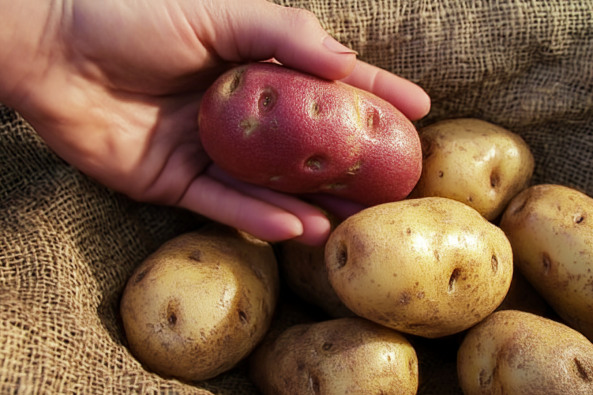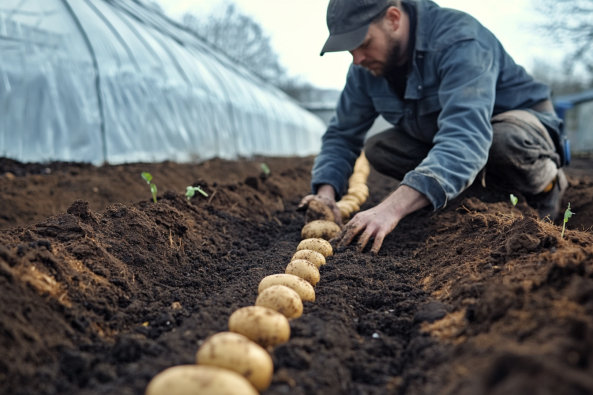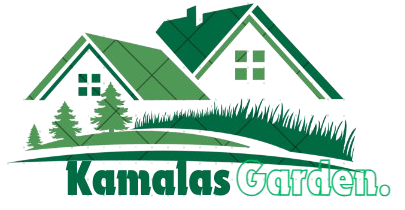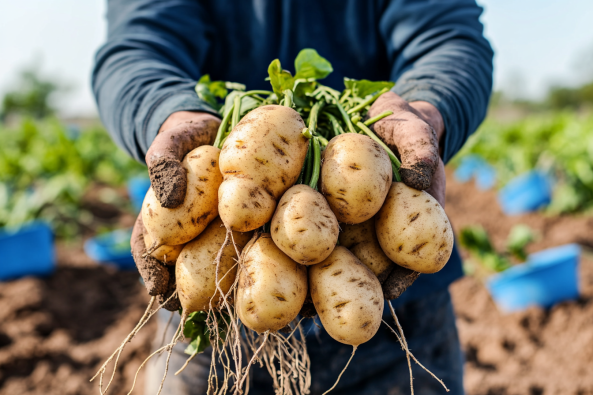Why Grow Potatoes at Home?
Growing potatoes at home is rewarding, cost-effective, and surprisingly easy. Whether you have a large backyard or a small patio, you can successfully cultivate your own fresh potatoes.
Benefits of Homegrown Potatoes
- Better Taste & Freshness – Homegrown potatoes taste richer and fresher than store-bought ones.
- Cost-Effective – Growing your own potatoes saves money compared to purchasing them regularly.
- Pesticide-Free – Control what goes into your soil and enjoy chemical-free potatoes.
Different Ways to Grow Potatoes
- In-Ground Planting – Traditional method, best for large gardens with well-drained soil.
- Container & Grow Bag Gardening – Ideal for small spaces, balconies, and patios.
- Raised Beds – Provides better drainage and easier maintenance.
Common Mistakes to Avoid
- Planting Too Early or Late – Understanding frost dates is essential.
- Using Supermarket Potatoes – They may carry diseases and aren’t always suitable for growing.
- Skipping Hilling – Hilling helps potatoes grow deeper and prevents sun exposure.
Choosing the Right Potato Varieties

Early-Season Potatoes
- Mature in 70-90 days.
- Best for short growing seasons.
- Examples: Yukon Gold, Red Norland, Irish Cobbler.
Mid-Season Potatoes
- Mature in 90-110 days.
- Well-balanced between yield and growth time.
- Examples: Kennebec, Purple Majesty, Gold Rush.
Late-Season Potatoes
- Take 110-135 days to mature.
- Best for long growing seasons & winter storage.
- Examples: Russet Burbank, German Butterball, Fingerlings.
Best Potato Varieties for Different Climates
- Cold Climates: Yukon Gold, Red Pontiac
- Warm Climates: Kennebec, Fingerlings
- Wet Climates: Russet, German Butterball
Preparing to Plant Potatoes
Selecting and Preparing the Planting Site
- Ideal Soil Conditions: Loose, well-drained soil with a pH of 5.0-6.5.
- Garden Beds vs. Containers: In-ground provides more space, but containers are better for limited areas.
Prepping Seed Potatoes (Chitting for Early Growth)
- Why Chitting is Important: Encourages faster sprouting.
- How to Chit Seed Potatoes:
- Place potatoes in a bright, cool (50°F/10°C) area.
- Let them sprout for 2-3 weeks before planting.
- Cutting vs. Whole Seed Potatoes:
- Small potatoes: Plant whole.
- Larger potatoes: Cut into pieces with at least 2 eyes per piece, then cure for 1-2 days.
How to Plant Potatoes

When to Plant Potatoes
- Best Planting Time by Region:
- Cool Climates: Early spring (March-April)
- Warm Climates: Late winter (January-February)
- Understanding Frost Dates: Potatoes should be planted 2 weeks before the last frost.
Methods of Planting Potatoes
Traditional Trench Planting
- Dig trenches about 6 inches deep.
- Place seed potatoes 12 inches apart.
- Cover with soil and gradually hill up as plants grow.
Container & Grow Bag Planting
- Choose 10-15 gallon grow bags.
- Fill with loose, well-draining soil.
- Add 3-4 inches of soil, plant potatoes, then cover with 2 inches.
- Keep adding soil as plants grow (hilling method).
No-Dig or Mulch Planting Method
- Lay seed potatoes on the soil.
- Cover with straw, hay, or compost.
- Keep adding mulch as plants grow.
Raised Bed or Square-Foot Gardening Method
- Use loose, well-draining soil in raised beds.
- Space potatoes 1 foot apart.
Caring for Potato Plants
Watering & Mulching Potatoes
- Watering Needs: Keep soil moist but not soggy.
- Mulching Benefits:
- Helps retain moisture.
- Prevents weeds and stabilizes soil temperature.
Fertilizing for Higher Yields
- Best Fertilizers:
- Organic compost for slow-release nutrients.
- Balanced 10-10-10 fertilizer during early growth.
- When to Fertilize:
- Before planting: Mix compost into the soil.
- After sprouting: Apply nitrogen-rich fertilizer.
Hilling Potatoes: What It Is & Why It Matters
- Step-by-Step Hilling Guide:
- When plants reach 6 inches, add soil around stems.
- Repeat every 2 weeks until plants bloom.
- Hilling Benefits:
- Protects tubers from sunlight.
- Encourages more root growth and higher yield.
Harvesting Potatoes
When to Harvest Potatoes
- Early Potatoes: Harvest in 10-12 weeks (small, tender potatoes).
- Main Crop Potatoes: Harvest in 15-20 weeks (full-size, long-storing potatoes).
How to Harvest Potatoes Without Damaging Them
- Use a garden fork and carefully lift soil.
- For containers, gently dump the soil and collect potatoes.
Storing & Curing Potatoes for Long Shelf Life
How to Cure Potatoes After Harvesting
- Why Curing is Important: Helps potatoes develop a thicker skin for storage.
- Best Curing Conditions:
- Store in cool (50°F/10°C), dark place for 1-2 weeks.
Best Ways to Store Potatoes
- Ideal Temperature & Humidity:
- 40-50°F (4-10°C) with 90% humidity.
- Avoiding Sprouting & Rotting:
- Store in paper bags or mesh baskets.
- Keep away from onions and fruits (release gases that speed sprouting).
Common Potato Problems & How to Solve Them
Potato Pests & How to Control Them
- Colorado Potato Beetles: Use row covers or hand-pick.
- Aphids & Wireworms: Introduce ladybugs or neem oil spray.
Potato Diseases & How to Prevent Them
- Blight & Rot: Use crop rotation and avoid overhead watering.
- Scab Disease: Maintain soil pH below 5.5.
FAQs About Growing Potatoes
- Can You Grow Potatoes from Store-Bought Potatoes?
- Not recommended due to possible disease contamination.
- How Deep Should Potatoes Be Planted?
- 3-6 inches deep, depending on variety.
- How Many Potatoes Can You Get from One Plant?
- 4-10 potatoes per plant, depending on variety.
- Can You Grow Potatoes Indoors?
- Yes, with grow bags and strong LED lights.
Conclusion: Start Growing Your Own Potatoes Today!
Growing potatoes is simple, rewarding, and versatile. With the right variety, planting method, and care, you can enjoy fresh homegrown potatoes all season long.
Related Posts You May Like
For more in-depth potato-growing tips, visit this complete guide.

